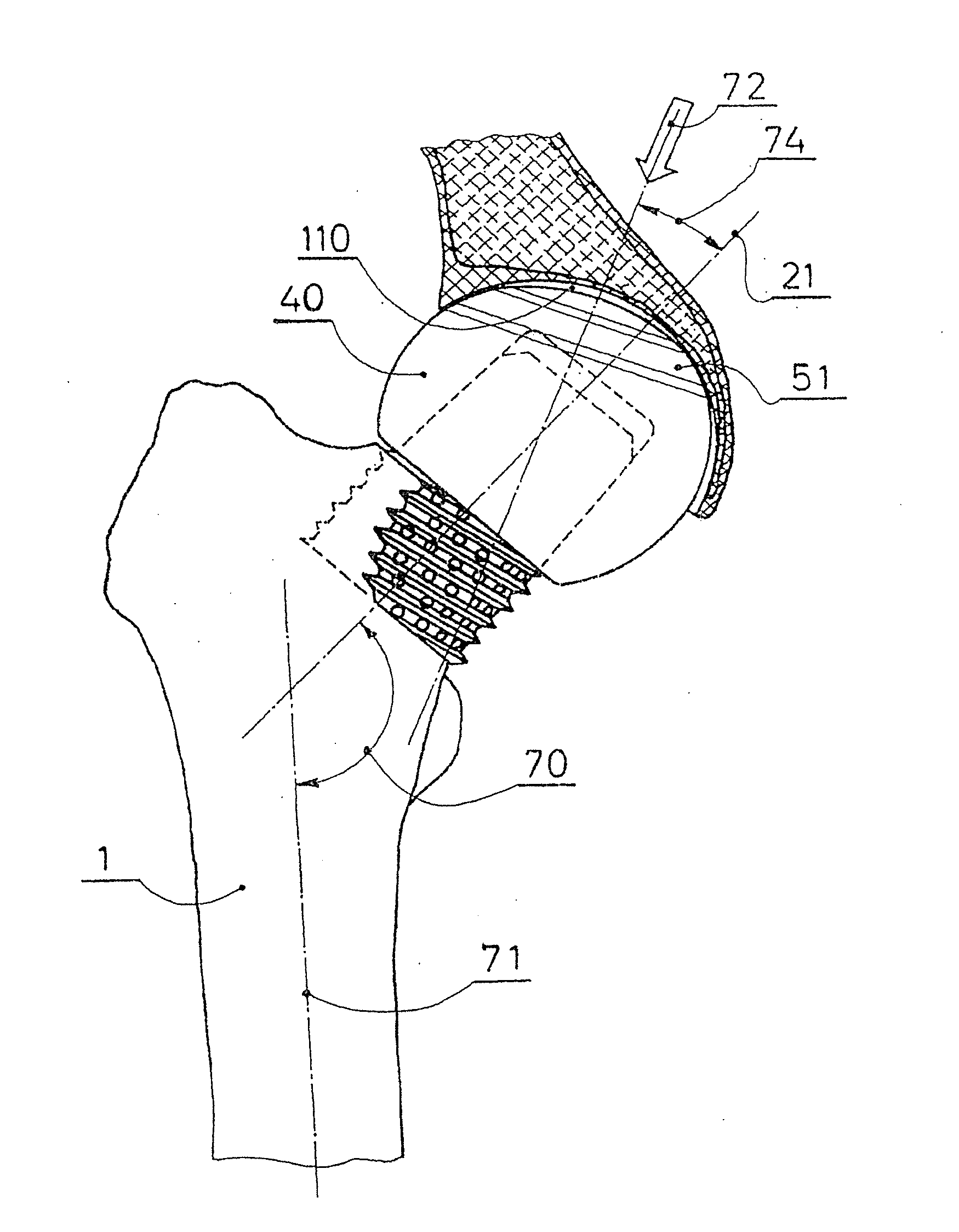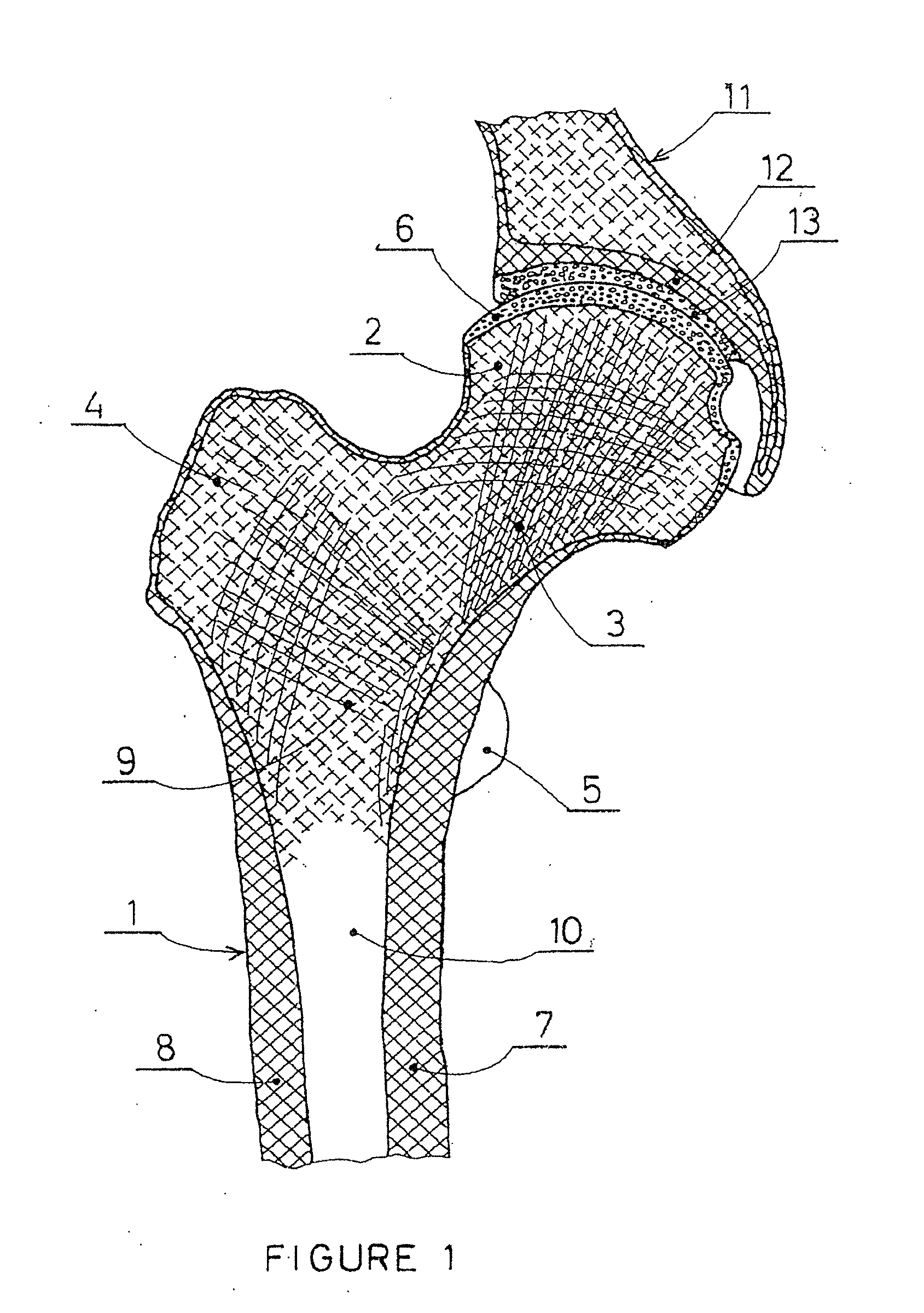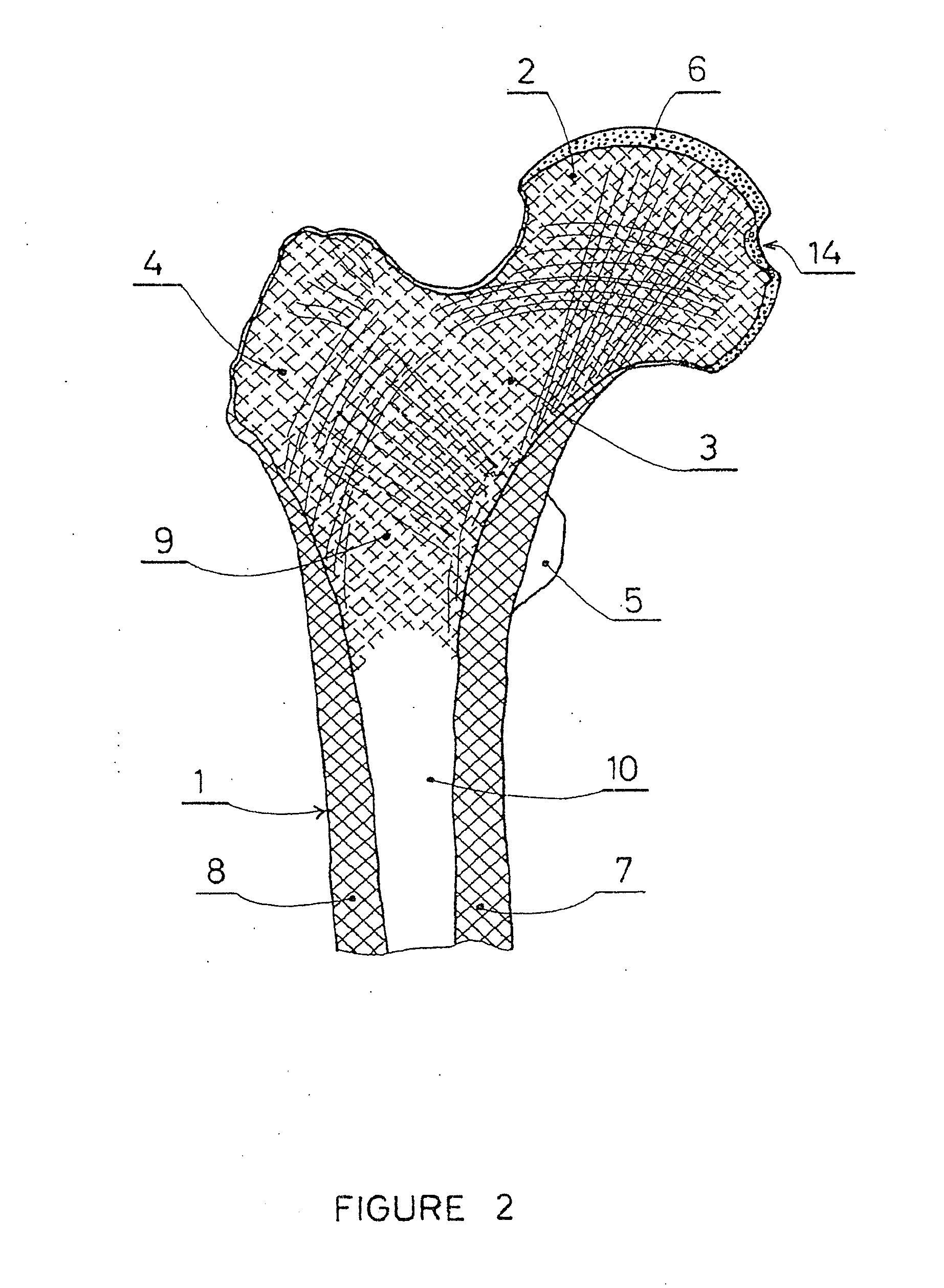Partial hip prosthesis
a hip joint and prosthesis technology, applied in the field of hip joint prosthesis, can solve the problems of limiting the duration of artificial joints, biological sequelae, revision surgery, etc., and achieve the effects of reducing friction and wear, low friction coefficient, and high abrasion resistance against the bon
- Summary
- Abstract
- Description
- Claims
- Application Information
AI Technical Summary
Benefits of technology
Problems solved by technology
Method used
Image
Examples
Embodiment Construction
[0091]For a simple and clear presentation, a human total hip joint articulation has been chosen for this disclosure, but the same technical arguments and design approaches can be used for a hip prosthesis for animals, specifically for dogs and cats.
[0092]The present invention is an extension of a prior invention by the inventor as set forth in PCT Patent Application No. WO2008 / 058756, published on May 22, 2008, which is incorporated herein, in its entirety, by reference (“the Tepic Application”). The Tepic Application discloses a joint prosthesis, such as a hip prosthesis, in which the convex and concave components have differences in shape to provide a broad contact surface. As set forth in the Tepic Application, the differences in shape between the components further provide improved lubrication of the components and particularly the contact surface. While that structure results in significantly reduced wear, it may still be of a concern, particularly when the concave component is...
PUM
| Property | Measurement | Unit |
|---|---|---|
| offset angle | aaaaa | aaaaa |
| offset angle | aaaaa | aaaaa |
| diameter | aaaaa | aaaaa |
Abstract
Description
Claims
Application Information
 Login to View More
Login to View More - R&D
- Intellectual Property
- Life Sciences
- Materials
- Tech Scout
- Unparalleled Data Quality
- Higher Quality Content
- 60% Fewer Hallucinations
Browse by: Latest US Patents, China's latest patents, Technical Efficacy Thesaurus, Application Domain, Technology Topic, Popular Technical Reports.
© 2025 PatSnap. All rights reserved.Legal|Privacy policy|Modern Slavery Act Transparency Statement|Sitemap|About US| Contact US: help@patsnap.com



